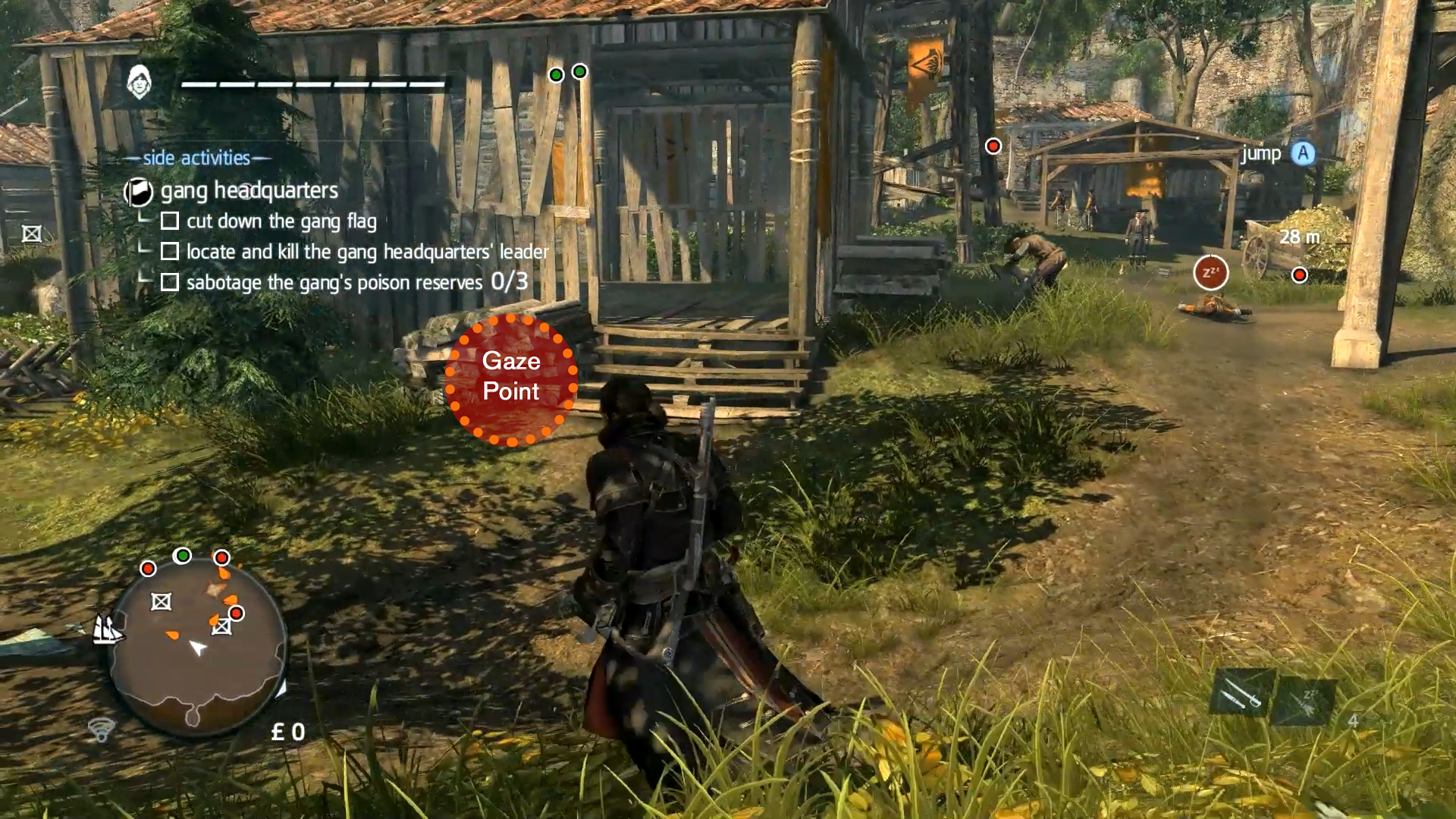
From the Wii to Kinect to virtual and augmented reality, alternative control systems have dominated gaming innovation in recent years. Among these is the upcoming field of eye-tracking. I recently had the chance to try out the Steelseries Sentry, the first commercial peripheral from Tobii Technology, an emerging eye-tracking company.
Eye tracking has a number of possible applications in the gaming space. For one, it can be used to subtly control the camera in third-person games—the kind of camera controls usually handled by the mouse or right analog stick on a controller. I tested this on the upcoming PC version of Assassin's Creed: Rogue, the first big game to implement eye-tracking.
The Sentry is a peripheral attached to the base of a laptop or a monitor via USB 3.0. In terms of size, it's the midpoint between a Wii sensor bar and the Kinect module. Tobii president Oscar Werner told me he hopes to work with hardware manufacturers in the future to build the eye-tracking camera array directly into laptops and monitors. After a quick calibration involving following a dot with my eyes, the array was set up and ready to go. It felt accurate, though it does require you to sit directly in front of the screen. Eye tracking wouldn't work for gamers who like to play reclined or using a couch/TV setup.
The idea is for camera control via eye-tracking to add a layer of immersion to the game, making camera movements more of a subconscious affair than constantly having to use the right thumbstick. In practice, I found this more trouble than it was worth, as the eye-tracking was unwieldy for controlling movement. To be fair, the thumbstick overrides your eyes when controlling the camera, so you can still assume direct control when you want. But if you plan on spending the entire game with your thumb glued to the stick, the addition of eye-tracking for those few vista-scene moments seems like a marginal addition at best.
While camera-controls didn't do much for me, I was much more intrigued by another application: using eye-tracking as a secondary pointer—specifically, to aim. I played an indie game called Son of Nor, controlling a desert sorcerer fighting against some unnamed monsters. Son of Nor's character fights using telekinesis—mind bullets, lifting and throwing objects, that sort of thing.

With most third-person action-RPGs, the mouse controls both the camera and your aiming reticule. But with eye-tracking, you can aim independently of where the camera is facing. You're still limited to what's on the screen, but it means you can run in one direction and aim at passing enemies in your peripheral vision without changing direction. Add to the equation the fact that my attacks were basically "force powers" and I really did start to feel like I was attacking with my mind.
There are currently a number of other games that support eye-tracking—Tobii showcases them online in the Tobii Arcade. My hope is that as eye tracking peripherals (and later the technology being built into laptops and monitors to begin with) that more developers adopt these control schemes and implement eye-tracking in more interesting, useful ways.
Keep up to date with the most important stories and the best deals, as picked by the PC Gamer team.
At $200, the Steelseries Sentry is a pricy peripheral with minimal applications. Whether or not it becomes a must-have accessory will depend entirely on the adoption of the technology by developers. If it sees widespread adoption, I could see eye-tracking controls being a new standard in gaming. But until then, it's the kind of thing that requires a conscious effort to remember to use. Like the Kinect-enabled squad commands in Mass Effect 3—it's a nice thing to have as a bonus, but you have to actually remember to use it.
As the former head of PC Gamer's hardware coverage, Bo was in charge of helping readers better understand and use PC hardware. He also headed up the buying guides, picking the best peripherals and components to spend your hard-earned money on. He can usually be found playing Overwatch, Apex Legends, or more likely, with his cats. He is now IGN's resident tech editor and PC hardware expert.


